

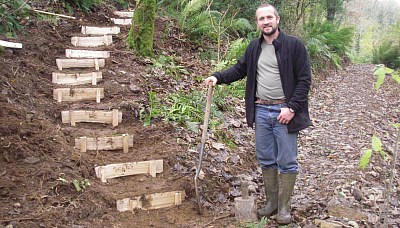

An additional aim is to involve and educate the local community in sustainable woodland management and woodland crafts.
Click for more detail...
Track and path maintenance | |
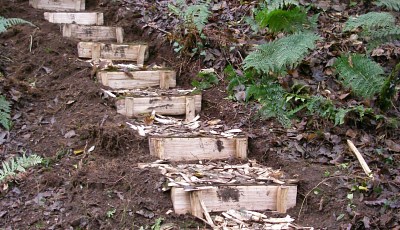 Steps constructed on a steep section of path. The steps are reinforced with cleft Chestnut cut from Sallerton Wood. | 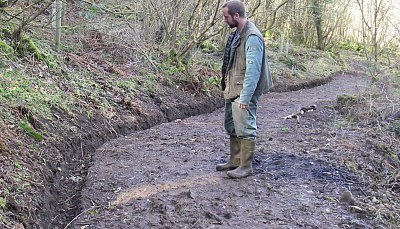 A newly-refurbished track. Good path and track maintenance gives safe access to woodland areas and confines trampling and vehicular damage to small areas. |
 Chipping coppice brash for surfacing tracks. |  Spreading the chippings. |
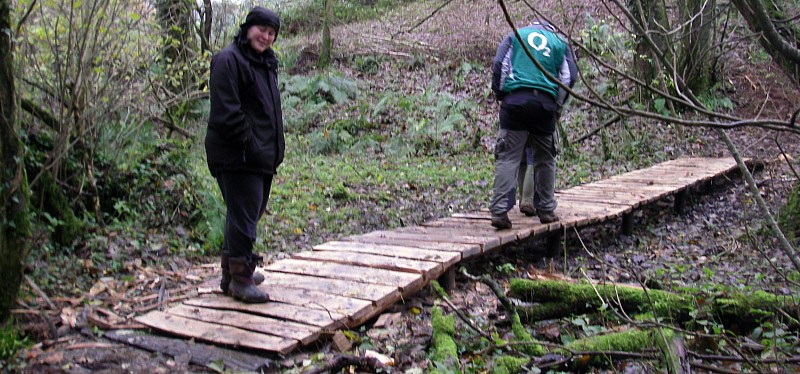 A boardwalk constructed over marshy ground. This gives access to the woodland work shelter area without damage to the wetland habitat. The boardwalk is constructed from Sallerton Wood Chestnut. | |
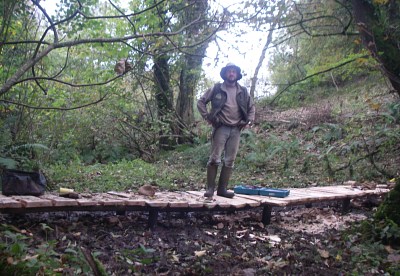 The boardwalk under construction. | 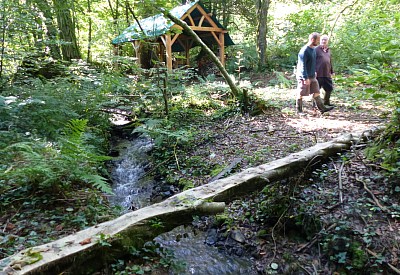 A simple log footbridge spanning a small stream. |
 A gate for the entrance, made at Sallerton Wood from timber extracted and processed there. | |
Construction of temporary shelters for woodworking areas | |
 Preparing Sallerton Wood Larch for a timber frame using a chainsaw mill. | |
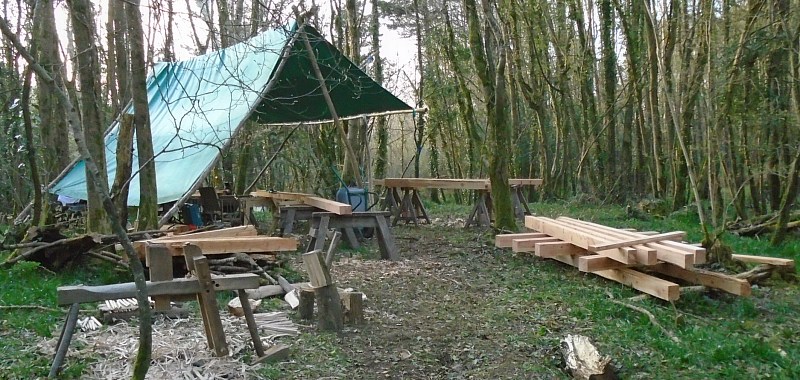 A temporary woodland shelter made from coppiced Ash poles. The shelter is shown here being used for the preparation of Larch timber for a woodland shelter frame. | |
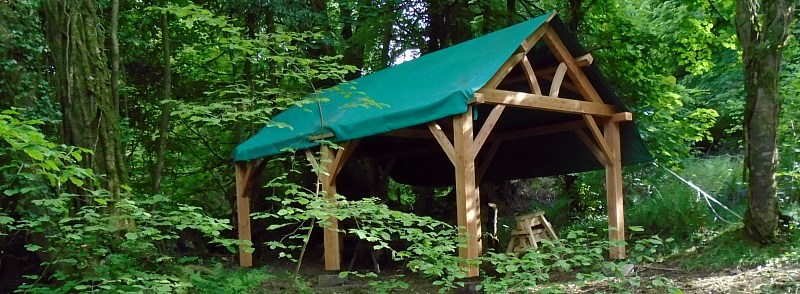 Completed Woodland shelter frame with its tarpaulin roof. | |
 Workshop shelters in the green woodworking area. |  The framed shelter used for brewing up. |
Coppicing for green woodwork and firewood | |
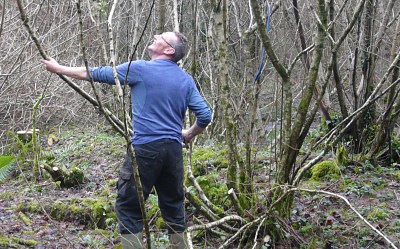 Coppicing. | 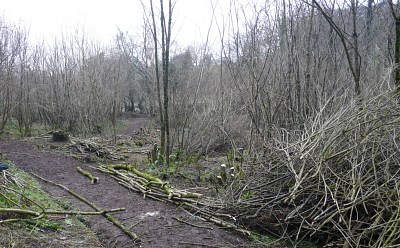 A coppice area. |
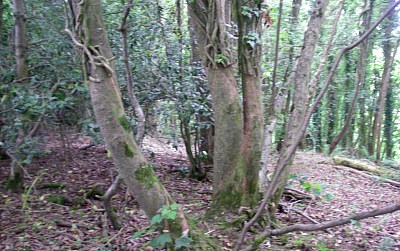 Ivy removed from Ash coppice trees. Ivy is removed from trees suitable for utilization but is left on others. |  Stacks of recently-coppiced timber. |
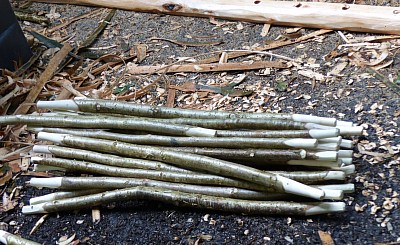 Completed bars and rail for making a hurdle. The rails are coppiced Ash and the bars are coppiced hazel. |  A stack of drying firewood for a log-burner. |
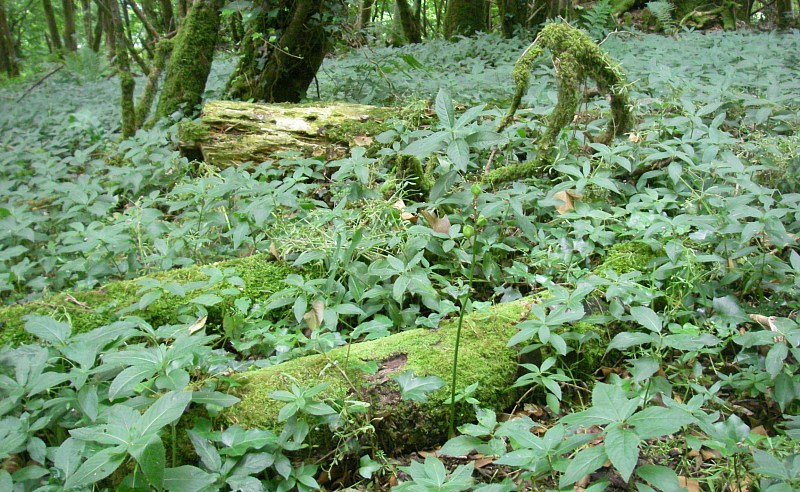 Unutilized timber left on the woodland floor to decay. This provides an imortant habitat for small mammals, fungi, bryophytes (mosses and liverworts), and invertebrates (e.g. snails, slugs, insects and woodlice). |  An old fallen, but living, Hornbeam. |
Woodland regeneration and new plantings | |

| Naturally-regenerating Ash seedlings. Many of the tree species at Sallerton Wood will regenerate naturally in more than an adequate way to keep up with utilization, but some species of native broadleaved trees will be planted to diversify the woodland and to provide useful timber species that are under-represented at present. |
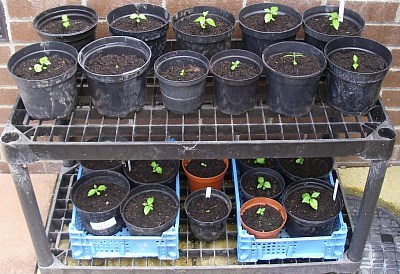 Wych Elm seedlings. | 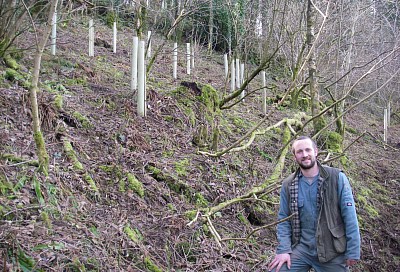 Newly-planted Wild Cherry tree saplings. |
 Small-leaved Lime cuttings. | 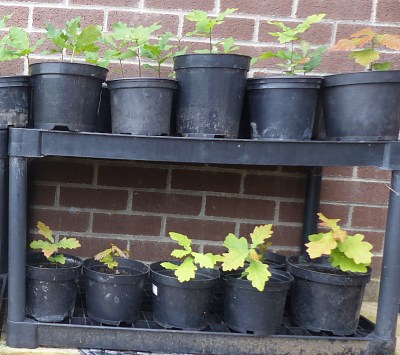 Oak seedlings. These will be pot-grown for a year or two before planting at Sallerton Wood. |
Management and utilization of the physical resources | |
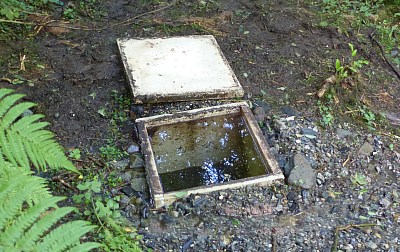 A spring converted into a well. | 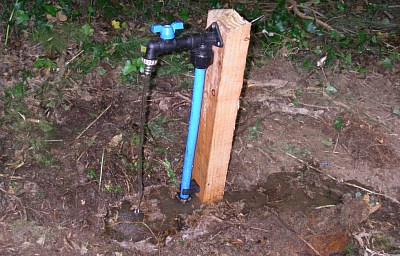 Spring-water on tap near the woodland workshop. |
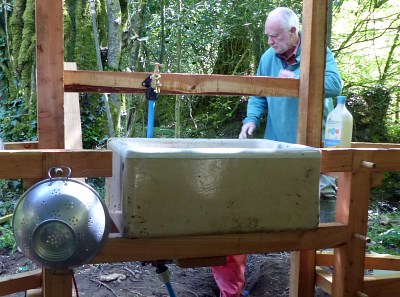 Kitchen shelter sink with its tap and electric pump. |  Solar panel for generating power to drive the water pump that raises spring water to the sink. It also doubles as a shelter for the clay oven. |
 Naturally-occurring clay in the woodland. |  Oven and rocket stoves made from the clay. |